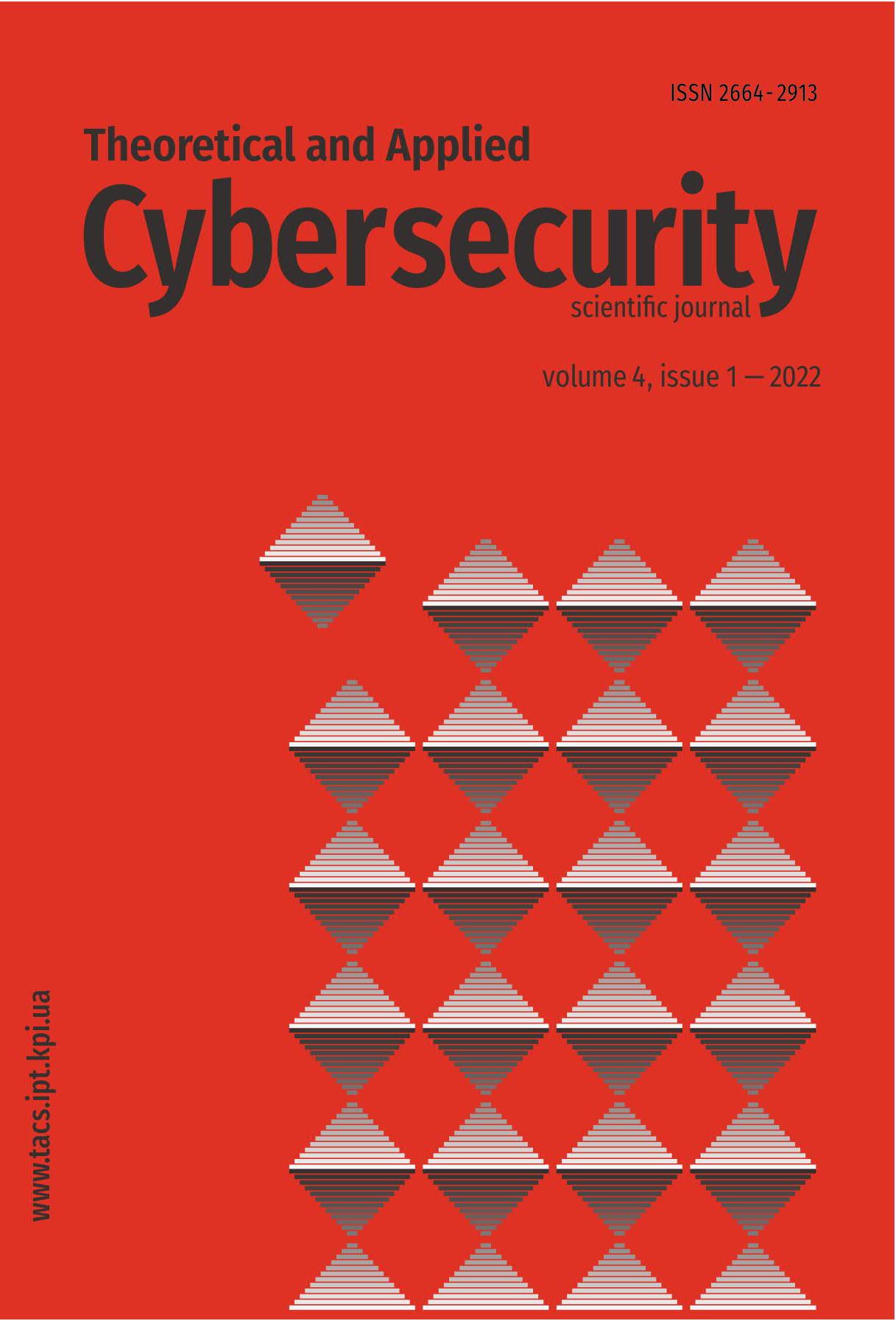The analysis of cybersecurity subject area terms based on the information diffusion model
DOI:
https://doi.org/10.20535/tacs.2664-29132022.1.274122Abstract
This research describes a comparison of the information diffusion model, built on the basis of cellular automata with the real statistics the dynamics of the use of terms from the field of cybersecurity in the information flows of the Internet. The information diffusion model is used with different parameters of the intensity of the information propagation. The cross-correlation of dynamics of the dissemination of new information in the model with the dynamics of the occurrence of concepts of the real subject area has been calculated. A high correlation dynamic of the terms occurrence with the dynamics given by the model at the selected parameters is shown. The research results allow fixing the model parameters that can further perform forecasting. The advantage of the information diffusion model based on cellular automata is the simplicity and clarity of a small number of parameters, and the ability to change them in accordance with the data on the actual occurrence of special terminology in information flows. The dynamics of the information diffusion model under various parameters allows us to determine centroids for the subsequent clustering of domain terms.
Downloads
Published
Issue
Section
License
Authors who publish with this journal agree to the following terms:
Authors retain copyright and grant the journal right of first publication with the work simultaneously licensed under a Creative Commons Attribution License that allows others to share the work with an acknowledgement of the work's authorship and initial publication in this journal.
Authors are able to enter into separate, additional contractual arrangements for the non-exclusive distribution of the journal's published version of the work (e.g., post it to an institutional repository or publish it in a book), with an acknowledgement of its initial publication in this journal.
- Authors are permitted and encouraged to post their work online (e.g., in institutional repositories or on their website) prior to and during the submission process, as it can lead to productive exchanges, as well as earlier and greater citation of published work (See The Effect of Open Access).

